|
Below: Father James D. O'Donnell O.S.A., who brought the Augustinian order to Lawrence (O.S.A.= Order of St. Augustine) The story of the Augustinian "friars" in the vicinity of Lawrence, Mass. is one of the more unlikely happenings in our history. It is also a tale of a small number of dedicated men bringing great benefit to the area. Who are the Augustinians? Since the dark ages, the Catholic church has had monastic orders such as the Benedictines, in which dedicated priests and non-ordained members live a monastic existence, praying constantly to God and contemplating his wonders. In the 1200s, a different kind of order sprang up: mendicants, meaning they wandered instead of becoming hermits, and lived off local charity rather than estates. Like the monastic orders, they had priests as well as monks (essentially). The main mendicant orders are the Franciscans, named after Saint Francis of Assisi, and the Dominicans, named after Saint Dominic de Guzmán. Regardless of whether members are ordained priests or not, they are generally called friars. The Augustinian order was founded in 1256 by uniting four groups of hermits into a new order with a mendicant approach. It was never as prominent in size as some of the other orders, but nevertheless spread in missions to England, Ireland, the German speaking lands (Martin Luther was an Augustinian before he had his split with Catholicism) and elsewhere. The Augustinians come to America When Reverend Matthew Carr, a 41 year old Irishman, arrived in 1796 as the first Augustinian in America, “there was only one Catholic diocese in the whole immense territory, from Georgia to New Hampshire and from the Atlantic Coast to Mississippi." (quoting Ennis, No Easy Road: The Early Years of the Augustinians in the United States). Catholics at that time numbered about 35,000 in a total population of nearly four million. They were concentrated chiefly in Maryland and Pennsylvania (Baltimore was the sole diocese), but small groups of Catholics could be found elsewhere. Numbers of the Augustinian order in America increased slowly, to about 14 after a few decades. For the first forty years, all the Augustinians in America were Irish-born. Arthur Ennis, who wrote the preeminent early history of the order in America, surmises that their Irish background made them particularly suitable for lone efforts in their "mission":
They launched their mission in Phiadelphia and built a church, St. Augustine's, that later was burned in 1844 by a nativist mob. They nevertheless persevered. They founded Villanova College around that time in a Philadelphia suburb. It would quickly become a seminary to train priests in the Augustinian tradition, and ultimately one of the more prominent Catholic universities in the United States. Below: Villanova College in 1849. Photo from Wikipedia. The Mission to Lawrence: Father James D. O'Donnell O.S.A. The Augustinian connection in Massachusetts came about through the work of James O’Donnell. The Irish-born immigrant was the first Augustinian priest ordained in the United States, in 1837, after entering as a novice in 1832 at St. Augustine's in Philadelphia. He was on the faculty of Villanova when the school opened in 1842. According to Ennis, how the Augustinian ended up in Lawrence is something of a mystery. “Father James had departed from Philadelphia early in 1848, apparently in a rebellious mood; his ambition went unsatisfied, he felt frustrated, bored with the small tasks assigned to him. He went off on a visit to Ireland, and before the end of the year he was back, hard at work now in Lawrence, assigned there by Bishop Fitzpatrick of Boston. How this came about is a puzzle. Although there is no record of permission given to him by his Augustinian superiors, he evidently received approval for his move to Lawrence, granted perhaps after the fact, for he would not otherwise have been acceptable in the diocese of Boston." Lawrence at that time had just been established and was a boomtown. Roads were being laid out, institutions were being constructed, such as libraries and schools, and mill buildings were going up everywhere. Catholic immigrants were pouring in. Destitute Irish laborers fleeing the potato famine had taken up vacant land just south of the river and soon had built over a hundred shanties. They were put to work, digging the canals and constructing the great stone dam, the largest dam in the world, that provided water power to the mills. According to a census taken in 1848, the town had a population of nearly 6,000, up from a couple dozen Yankee farmers two years earlier. Of that number, 2,139 were natives of Ireland, and presumably the vast majority of them were Catholic. Father James immediately embarked on a building spree to meet the needs of the burgeoning Catholic population. Although a small wooden church, Immaculate Conception, had been built in 1846 by a Father Charles Ffrench (not a typo), another mendicant friar (albeit a Dominican), Father James surmised the need for more houses of Catholic worship. He arrived in Fall of 1848 and promised that he would be saying Mass in a new church on New Year’s day. When the day came, the new church was barely walls and timbers, with snow falling through the open roof. However he said Mass as promised and a few months later the church was finished, being the first St. Mary’s. He financed the construction efforts with a church bank, taking deposits from his parishioners at interest. A few pennies a month from each of the couple thousand members added up, and lucky for him there were no bank runs (although in 1882 there was a run on St. Mary’s bank when a large number of depositors sought to withdraw their savings during a labor strike)(Source: Ennis). O'Donnell barely had time to rest before he set about building a larger church, this time of stone, on the same site. The construction took place all around the little wooden church, and then the new, larger church was completed, the wooden structure was torn down and its beams were used to construct a rectory for the priests. Then, in 1861, O'Donnell constructed a massive replacement church, also called St. Mary's, after buying up land on both sides of Haverhill Street. This structure, which burned down in 1967, became the St. Mary's school following the construction of the (still-standing) St. Mary's "cathedral" nearby on Haverhill Street in 1871. Below: Photo from the Lawrence Public Library archives of the original St. Mary’s granite building, which became the second St. Mary’s school. This building was destroyed by fire in 1967, after which time the high school became solely a girl's school. St. Mary’s High School for girls began instruction in 1880 and closed in 1996, when nearby Central Catholic high school began admitting girls. St. Mary’s Elementary School closed 2011. Source: Louise Sandberg, library archivist, on her Queen City blog. Father James also organized the parochial school system with the help of the Sisters of Notre Dame de Namur and began ministering to some of the nearby Catholic communities. He regularly visited Methuen and Ballardvale (the main mill section of Andover at that time). On November 22, 1853 he blessed the first Catholic chapel in Andover. This church, St. Augustine's, survives and prospers to this day under the auspices of the Augustinian order, in a later-constructed building. O'Donnell's strenuous activity must have taken a toll on his health, for he died quite unexpectedly on April 7, 1861, only days before his fifty-fifth birthday. No cause of death is recorded, but his illness was sudden and brief for on the previous Sunday he had presided at Easter services. The Augustinians in Lawrence after James O'Donnell's near one-man-show Following the untimely death of Father James, a series of prominent Augustinian priests ran things in Lawrence, although for most of the following decades they were only two or three on the ground. These included Rev. Ambrose McMullen, O.S.A. (in Lawrence 1861-1865), Rev. Thomas Galberry, O.S.A (in Lawrence 1867-1872 I believe), Rev. John Gilmore (in Lawrence 1872-1875). I say prominent mainly because they later went on to do great things, such as serve as president of Villanova (Mullen and Galberry), or become a bishop of the diocese of Hartford (Galberry). Mullen returned to the area after his tenure as college president, serving as pastor of St. Augustine's in Andover, where he died on July 7, 1876 at age 49. Photo below: Rev. Ambrose McMullen, O.S.A. Father Mullen was first stationed at St. Augustine's in Philadelphia and later in Lawrence, Massachusetts, where he continued the work of Father James O'Donnell. From 1865 to 1869, he was President of Villanova College. His next assignment was to St. Augustine's, Andover, Mass., until his death in 1876. He is buried in Saint Mary's Cemetery in Lawrence, Massachusetts. The construction of St. Mary's was followed by the organization of numerous churches in Lawrence in addition to that church and Immaculate Conception. Six other Catholic churches in north Lawrence were ultimately under the care of the Augustinians, many serving immigrant communities: St. Francis (Lithuanian Catholic) on Bradford Street, dedicated 1905 closed 2002; Sts. Peter and Paul (Portuguese Catholic) on Chestnut Street, dedicated 1907 closed 2004; Church of Assumption of Mary (German Catholic) on Lawrence Street (where I was baptized as an infant in 1971), dedicated 1897 and closed 1994; Holy Trinity (Polish Catholic) on Avon Street, dedicated 1905 closed 2004; St. Laurence-O'Toole, dedicated 1903 closed 1980; and St. Augustine's on Ames Street, where I went to Mass as a child, merged with St. Theresa's of Methuen, 2010, with masses celebrated once weekly in the St. Augustine's building, now called a chapel. Here is the Boston archdiocese list of merged or suppressed churches. My great-grandfather's nephew, Rev. Daniel Driscoll O.S.A. (1886-1963), was educated at Villanova and finished up his priestly vocation at St. Mary's in Lawrence. The 1940 federal census lists him living in the St. Augustine's rectory on Ames Street as the head priest along with two other priests; he later was at St. Mary's. Below: Photo of my great-grandfather's nephew, Father Daniel Webster Driscoll, O.S.A. (circa 1950?) of Lawrence, Mass. Served as priest at St. Augustine's, Lawrence, then St. Mary's. Founding of Merrimack College, North Andover, in 1947 Merrimack College was founded in 1947 by the Order of St. Augustine at the invitation of then Archbishop of Boston, Richard Cushing. It was founded to address the needs of returning G.I.s who had served during World War II, and is the only other Augustinian college in the U.S. besides Villanova. Rev. Vincent A McQuade, O.S.A., was a driving force behind the establishment of Merrimack and served as its first president. During his twenty two years in that position, he developed the college into a vital resource in the Merrimack Valley. "Vincent Augustine McQuade was born in Lawrence, Massachusetts on June 16, 1909, the son of Owen F. and Catherine McCarthy McQuade. The product of a Catholic home, Father McQuade was a son and a brother who attended St. Mary’s Grammar School, graduating in 1922. In August the same year, at age thirteen, he was received as a Novice in the Order of Saint Augustine. A graduate of Villanova University in Philadelphia, Father McQuade was ordained in 1934 and received his Master’s and Doctoral degrees from Catholic University in Washington, D.C. Father McQuade was a member of the faculty at Villanova from 1938 through 1946 who served in a succession of administrative roles including Acting Dean and Assistant to the President. Father McQuade also held a number of positions that required him to minister and advocate for servicemen, befitting the future founder of a college conceived in part for returning veterans." (source: https://merrimack.smugmug.com/History/The-College-on-the-Hill/) Below: Future site of Merrimack College, Wilson's Corner, North Andover, 1946. Source: same Today, Merrimack College has:
Photo below: Merrimack College, North Andover, "a selective, independent college in the Catholic, Augustinian tradition whose mission is to enlighten minds, engage hearts and empower lives". Source: college website.
6 Comments
John Lamond
12/27/2020 11:16:05 am
I have just discovered your marvelous blog, and am enthralled, not least because I am the product of a Lawrence-born father and a Lowell-born mother. While I am hardly religion-obsessed, as a life-long Merrimack Valley resident only recently departed from the area, now "below the Mystic" (as my father was wont to say) southwards in Plymouth, MA I have been looking for historical accounts of both the Oblates in Lowell - I was baptized and confirmed at Immaculate Conception - and the Augustinians in Lawrence, mostly because my father had three male first cousins, all of whom served OSA - Frs. John, Bernard and Augustine (naturally) Lamond, also of Lawrence. Your blog fills a gap, and is very well-done. thanks for your work, and by all means, I am checking the box below.
Reply
12/27/2020 09:17:39 pm
Thank you very much for your kind words. My pleasure that I helped provide you with important information.
Reply
Margaret Curro
5/16/2021 09:42:45 am
I also found this interesting. My father's cousins were Frs John, Bernard, and Gus. I am assuming that John Lamond and I are related.. I also live south of the Mystic!
Reply
John Lamond
9/5/2022 09:09:44 pm
Margaret - I am quite late in realizing that you had responded to my 2020 thank you note to Carl for his piece on the Lawrence OSA’s.
Margaret Curro
12/4/2021 06:48:07 pm
Hello John,
Reply
Neil Lynch
1/12/2022 04:24:40 pm
What fascinating reading! Carl, I stumbled onto your blog after googling a question: "Have the Augustinians withdrawn from St. Mary's in Lawrence. It brought me here. Thought I might share a couple of things, through you, with John Lamond and Margaret Curro. First, in her 1995 book, HUDDLE FEVER, author Jeanne Schinto, who lived for years on Prospect Hill before moving to Shawsheen Square, Andover, included a lengthy interview with Father John Lamond, OSA, (pgs. 186 - 195) who, by that time, was retired and living at Merrimack College. Jeanne handed over all her notes to Lawrence History (Eartha Dengler's group), at the foot of Essex Street, and they can be read there.
Reply
Leave a Reply. |
|
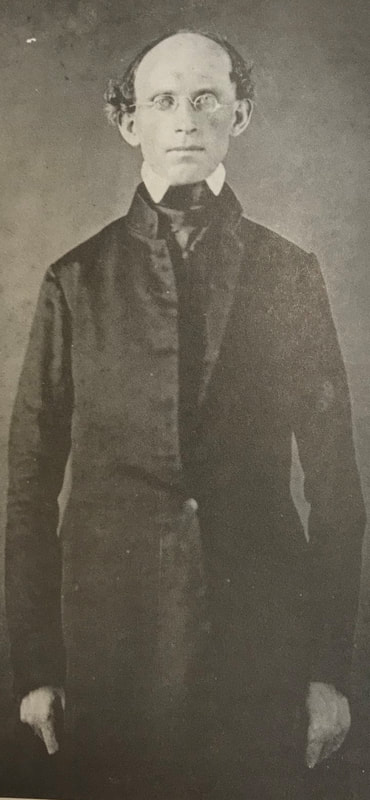
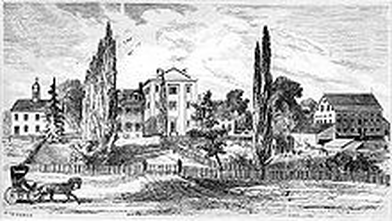
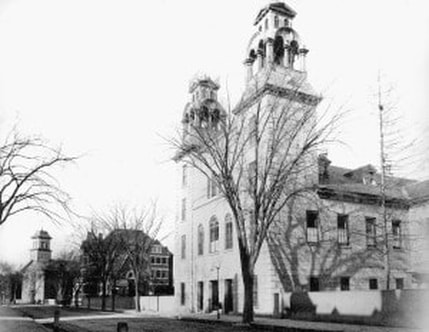
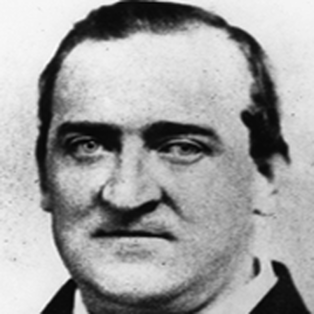
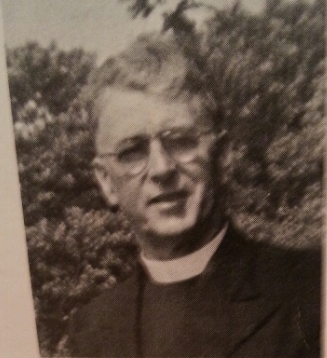
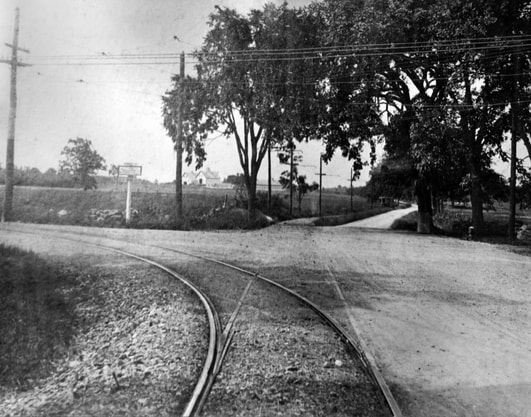

 RSS Feed
RSS Feed